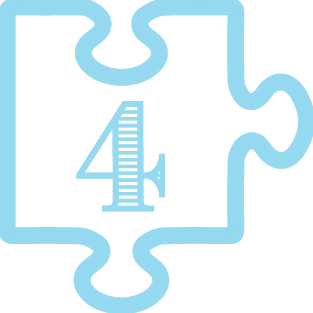
The COVID-19 pandemic is disrupting the lives of people around the world. Social distancing has led to widespread school closures, which means families must quickly adapt to at-home learning. For children with autism, this may be an especially challenging adjustment.
Children with autism typically excel when following a predictable and consistent day-to-day schedule. Since school closures, cancellations of after-school activities, and being housebound have thrown a wrench in their daily routine, children with autism may experience heightened anxiety during this uncertain time. Intense emotions can magnify some of the common characteristics of autism, such as challenges with communication, repetitive behaviors, sensitivity to sensory stimuli, and difficulty with paying attention.
It’s important to remember that autism is a spectrum disorder, which means there is no “one size fits all” approach. Nonetheless, we’ve gathered some useful tips for parents to help children with autism adapt to the new “normal.”

Talk to your children about what’s going on.
All children are aware that life is unusual right now, and it’s often better to acknowledge what’s going on rather than trying to hide it. Consider calmly discussing the coronavirus in a child-friendly manner to help minimize uncertainty.
The Child Mind Institute published a useful article about Talking to Kids About the Coronavirus. They advise parents to be developmentally appropriate and reassuring, take cues from your child, avoid inserting your own anxiety, focus on what you’re doing to stay safe, and keep an open dialogue. Encourage your children to ask questions and express their feelings – verbally or through an outlet like drawing or writing. You can also utilize web resources such as:
- Tumble Science Podcast for Kids – Answering Kids’ Coronavirus Questions
- Scholastic Classroom – FAQs and articles to educate kids about the coronavirus, organized by grade level

Establish routines and create a visual schedule.
Children with autism feel more secure when they know what to expect. Therefore, establishing a daily routine and maintaining a visual schedule are two effective ways to reduce feelings of uncertainty. We recommend building transitions and breaks into your day, such as going outside for a walk or playing a quick game of “I Spy.”

Create a designated school space.
You may find it challenging to get your kids into the school mindset while they’re at home. Try setting up a designated school zone within your house. Where feasible, incorporate familiar elements from your child’s classroom, such as a desk or centers. Ask your child what their favorite part of their classroom is and see if you can add it to their new school area. Better yet, involve your child in creating this exciting new space!

Make a list of “classroom” rules.
Work together with your child to establish a visual list of class expectations to follow while in their school space. If you know what their typical classroom rules are, try adapting them to yours. Creating a behavior chart can help to enforce these rules, especially if your child had one at school.

Use reward systems for good behavior.
Reward systems are designed to reinforce positive behavior, an excellent tool for fostering a productive learning environment. When your child listens, behaves appropriately, or accomplishes a task, reward them with highly motivating incentives like educational screen time, special snacks, or extra outdoor time.
This tactic can be especially effective if you have other kids in the house. Children with autism learn proper social skills and improve their communication skills through peer modeling. Reward systems encourage desired behavior from all kids in the house and positively impact your child with autism.

Contact your child’s teacher or service providers.
Your child’s teacher (or other service providers) know how your child learns and behaves at school, and is therefore well-positioned to:
- Advise you on creating an effective home-school environment
- Develop a long-term plan for working toward goals at home
- Share effective techniques for home instruction
- Provide educational activities you can do at home
- Answer any questions or concerns you have about your child’s learning

Practice desensitizing uncertainty for children with autism.
Uncertainty triggers fear for many people, but especially for children with autism. At a time when everything is up in the air, it’s important to help your child feel less sensitive toward the unknown. You can try using games of chance or improvisation to practice reacting to outcomes that aren’t predictable. You can also create a Social Story to explain parts of the day that may be unstructured. Introducing this thought process can help children manage anxiety and reduce stress responses when unexpected circumstances occur.

Make time for self-care.
To maintain a healthy, positive mindset, make time for yourself during the day. Juggling the demands of working from home, helping children with schoolwork, and managing a household can be overwhelming. Schedule time each day to do something that recharges you, whether it’s exercise, meditation, reading a book, or engaging in a favorite activity that makes you feel better. You’re a role model for your children, so how you handle this stressful situation can affect how your kids manage their worries.
When trying to incorporate these tips and strategies into your life, be patient and realistic. Things may not go smoothly right away, and some of these ideas may not work for your family at all – and that’s okay! Keep your head up, enjoy the little things, and remember that this will get easier with time.
For some additional helpful information and resources, check out our other blog posts:
